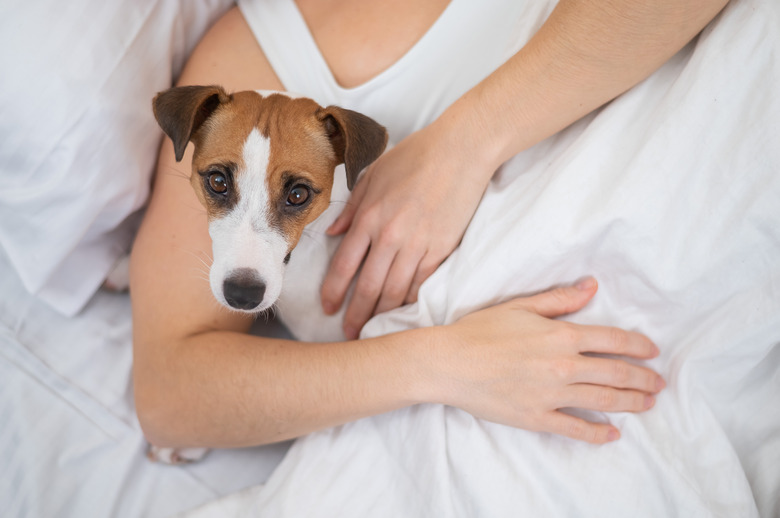Do Dogs Like Being Held?
Do dogs like being held like a baby? Some breeds are very loving, and if you own a toy or small type of dog, it's easy to cradle your pup in your arms. But large animals as well as certain standoffish breeds might not appreciate being hugged or held tightly. Whether you're new to life with dogs or a seasoned pet owner, it's a good idea to learn a dog's body language so you can pick up on whether hugging, holding, and carrying agrees with him. If you have questions on the topic, you can always ask your pet's vet for guidance.
Do dogs like to be carried?
Do dogs like to be carried?
If you're looking for an affable canine who loves to be held and carried, consider some of the top 25 most affectionate dog breeds, including the Labrador retriever, Irish setter, Boston terrier, and poodle. But carrying or holding a dog to show love or to offer comfort isn't really a part of a dog's DNA.
Instead, a dog may become alarmed if you reach out and try to hold her tightly, resulting in a loud yelp or even a bite. Trying to pick up or hug your animal can cause her to feel trapped in your embrace, and having your face so close to hers may be interpreted as a threat. There's even science behind dog hugging. One study found that when 250 people clutched at their dogs, 81 percent showed signs of stress.
Signs your dog isn't a hugger
Signs your dog isn't a hugger
You may tell people, "My Chihuahua always wants to be held," and that might feel true to you, but experts say it's more likely that your pet is simply tolerating this act. And the Chihuahua breed is so small that he can't exactly wriggle away from you in protest when you carry him. Other owners ask, "Why does my dog spoon me?" and the answer could be that he's used to it since he shares a bed with you regularly. But being carried or hugged differs from cosleeping.
To determine whether your dog enjoys being picked up and hauled around, watch for the following:
- Tenseness: If your pup stiffens or tenses up when you lean in to hug or pick him up, refrain from this activity. A content animal is relaxed and loose in the limbs rather than rigid.
- Lowered ears: When ears are laid alongside the head or are flicked back, it's an indication of discomfort or stress. The same holds true if your dog turns his head away from you.
- A tucked tail: Wagging the tail is an important way to convey feelings. But when your pet's tail is down low and pushed between his legs, he's not OK with what you're doing.
- Yawning: Is he tired? A yawn while you're annoying your dog by carrying him means he's stressed out at the situation. (So, put him down gently.)
Teach your dog to enjoy being held
Teach your dog to enjoy being held
While being held or carried isn't always the best practice for dogs, it's a good idea to get your pet used to the sensation. The reason for this is that small children in your house may try to grab at your dog, and you may need to hold or carry her at the groomer or vet in some cases.
To ease your pet into this feeling, start by putting one arm on your dog's back and then offer a treat if she tolerates it. Next, wrap your arm around her back or shoulders to enclose them or try it with two arms. Keep pairing longer hugs and holding with tasty treats to reward her until your dog comes to associate these motions with positive vibes.
